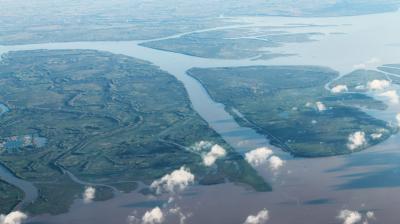Dynamic Water Resources Assessment Tool (DWAT)
Dynamic Water Resources Assessment Tool (DWAT) aims to ensure the sustainable and effective management of water resources by adequately assessing their sources, extent, dependability, and quality to inform long-term planning and policy assessment and development.
DWAT allows the assessment of land-use changes within the basin over time, and of the impacts on water availability under various scenarios, including climate change. This tool is intended to help users, particularly policy specialists and water resource managers, identify current and future water management challenges and compare those with current and past water resources availability. This tool can also help better understand the impacts of past and present water management practices on water resources, as well as the interactions between climate, water and landscape. Its use can contribute to water reform by providing nationally and regionally consistent water resource information and data, such as surface water, groundwater, urban and agricultural water supply, and use. Moreover, it can aid in the formulation of government policy and the development of broad-scale strategic plans and decision-making.
DWAT uses a distributed conceptual scheme for water cycle analysis and contains sub-algorithms, such as evapotranspiration, infiltration, watershed runoff, groundwater movement, and channel routing. Linking the system to a GIS tool makes searching for physical input parameters convenient. The model is being verified through its application to various rural and forest catchments, including new urban development regions in Korea. It is also being peer-reviewed by a panel of Commission for Hydrology experts, who are applying it to basins located in different geographical areas, each with different climatic characteristics. This peer-review has the objective of further testing the system to enhance the model reliability strongly.
Download the DWAT beta version (Version 2).
- Disclaimer: Use of beta software is at the user's risk; user discretion is advised. We would appreciate your feedback if you decide to test the DWAT beta version.
- Installation instructions: If your computer has Visual C++, you may download and install DWAT. If you don't have Visual C++, please download and install both exe files.
Other resources:
- Commission for Hydrology recommendations on the use of DWAT
- Report 4th DWAT Workshop
- Report 3rd DWAT Workshop
- Report 2nd DWAT Workshop
- Report: First DWAT Workshop
- DWAT User Manual
- Video Tutorials:
- 1: Using Google Maps
- 2: Using basin information
- 3: GIS Data
- 4: Thiessen Method
- 5: Calibration
- Infographics:
DWAT has been under development since 2008 as a part of the activities of WMO for the Regional Association II Working Group on Hydrological Services, and is supported by the Han River Flood Control Office, Ministry of Land Infrastructure and Transport, Republic of Korea.




